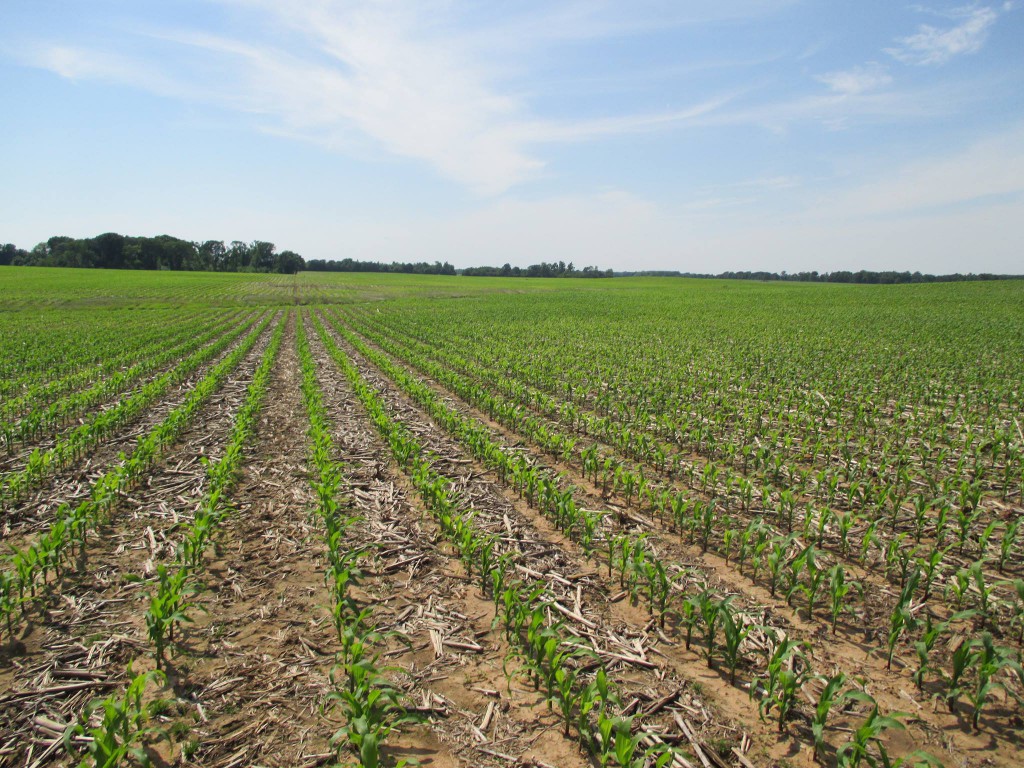
Liquid applicators are commonly used to apply different fertilizer solutions and similar to the sprayers, they need to be calibrated properly to apply the desired application rate in gallons per acre (GPA). While the calibration process for liquid fertilizer applicators is similar to the sprayers, the actual rate for the fertilizer can vary greatly from water (especially at higher rates) due to the difference in the density between the water and fertilizer. Therefore, an adjustment factor needs to be used when calibrating liquid fertilizer applicators using water. This is not required when calibrating sprayers for pesticide applications because we actually use water as a carrier for pesticide applications and the amount of pesticides (chemicals) mixed in the water is usually so small to have an affect on the density of the solution. But if you mix and apply pesticides in a liquid fertilizer or other solution than water, then again an adjustment factor would need to used to properly calibrate the application equipment.
The table below provides adjustment factors for some liquid fertilizer solutions including few commonly used nitrogen sources.
| Product | Density (lb/gal) | Specific Gravity | Adjustment Factor |
| 28-0-0 | 10.65 | 1.28 | 1.13 |
| 30-0-0 | 10.80 | 1.30 | 1.14 |
| 32-0-0 | 11.06 | 1.33 | 1.15 |
| 7-21-7 | 11.20 | 1.34 | 1.16 |
| 10-34-0 | 11.65 | 1.37 | 1.17 |
| 12-0-0-26 | 11.10 | 1.38 | 1.17 |
| 11-37-0 | 11.60 | 1.39 | 1.18 |
How to use adjustment factor: Let’s work through an example to illustrate how to use an adjustment factor during calibration. A side-dress applicator needs to be calibrated to apply 32% UAN fertilizer at an application rate of 40 GPA. So at what rate (GPA) the sprayer should be calibrated using water to apply 40 GPA of 32%UAN?
Using Table 1 above, 32% UAN has a density of 11.06 pounds per gallon and an adjustment factor of 1.15. So simply multiply the desired UAN application rate (GPA) by the adjustment factor to determine the water-only rate to be used for calibration. For this example, it will be:
Water Calibration Rate (GPA) = 40 GPA (UAN Rate) X 1.15 = 46 GPA
This means that the sprayer must be calibrated to apply 46 GPA of water so that it’s applying 40 GPA of 32% UAN during field application.
Remember that if the applicator was calibrated using water at the same rate as fertilizer, then the actual applied rate of fertilizer will be lower than the target rate, again due to the density difference between the water and the fertilizer solution. For a fertilizer solution not listed in the table above and more details on how to calculate an adjustment factor for a particular solution, the following publication from Dr. John Long at OSU is a good resource and cover the steps in much more detail: Using Water to Calibrate Sprayers for Fertilizers and Other Liquid Solutions.
